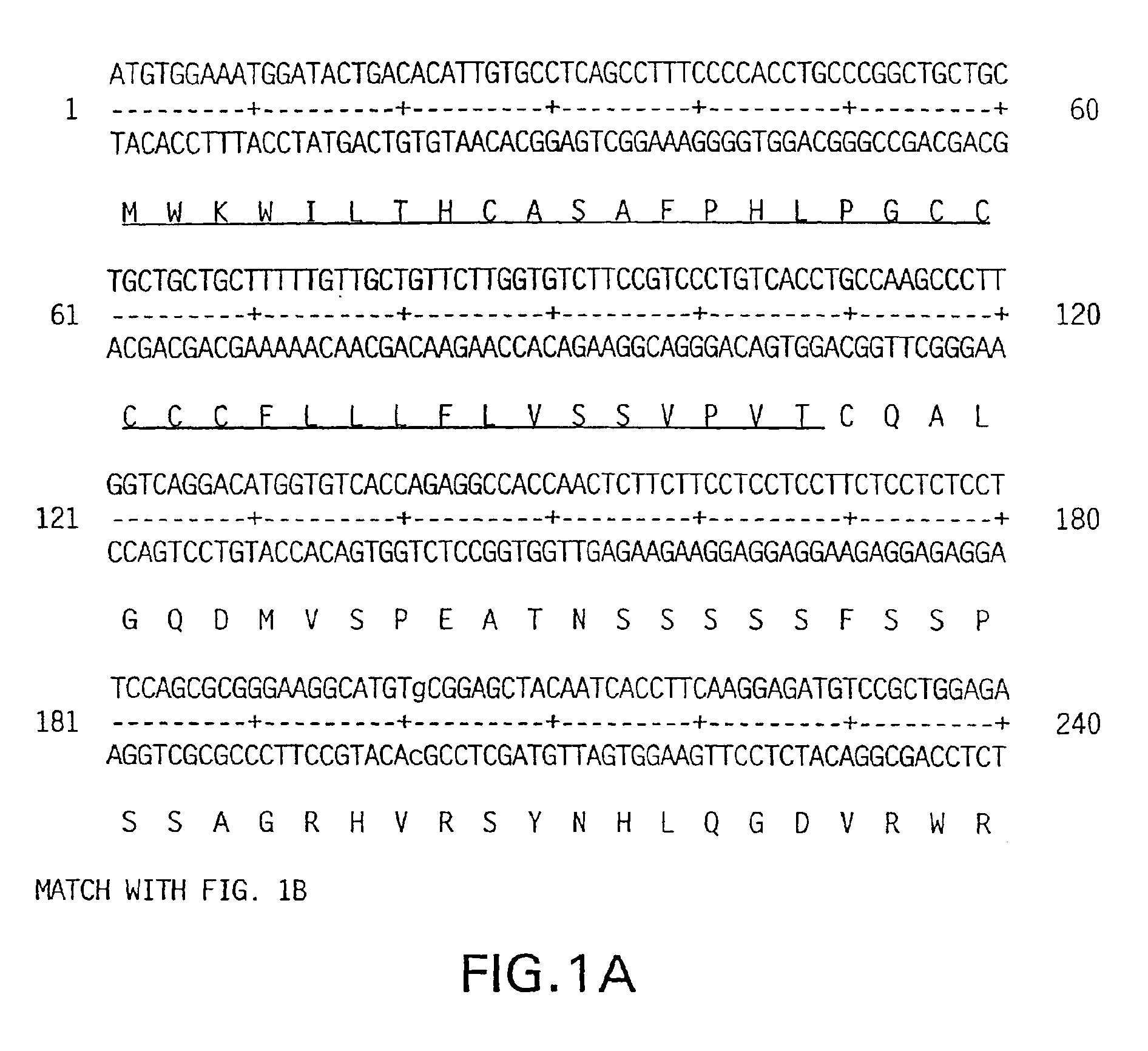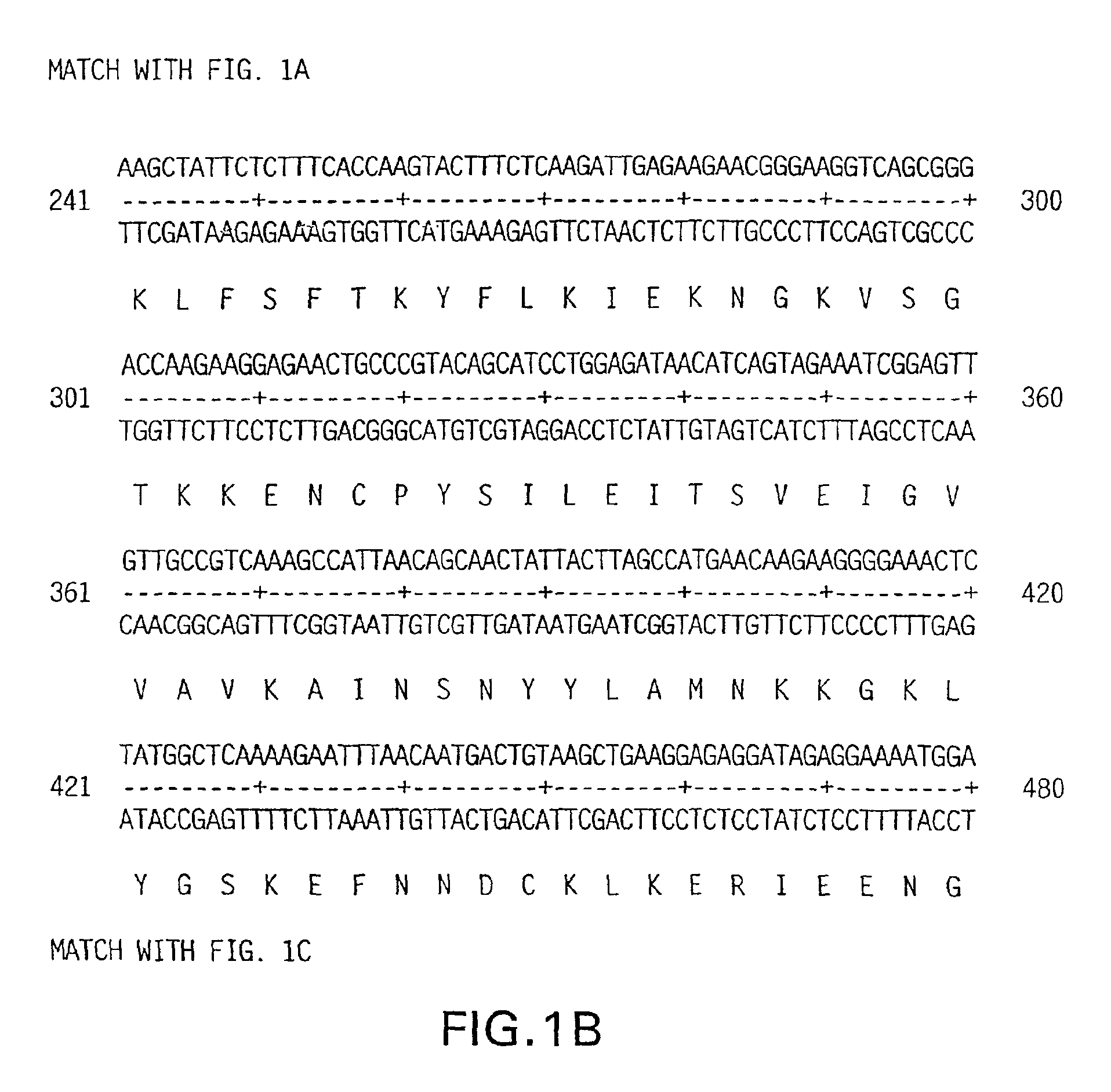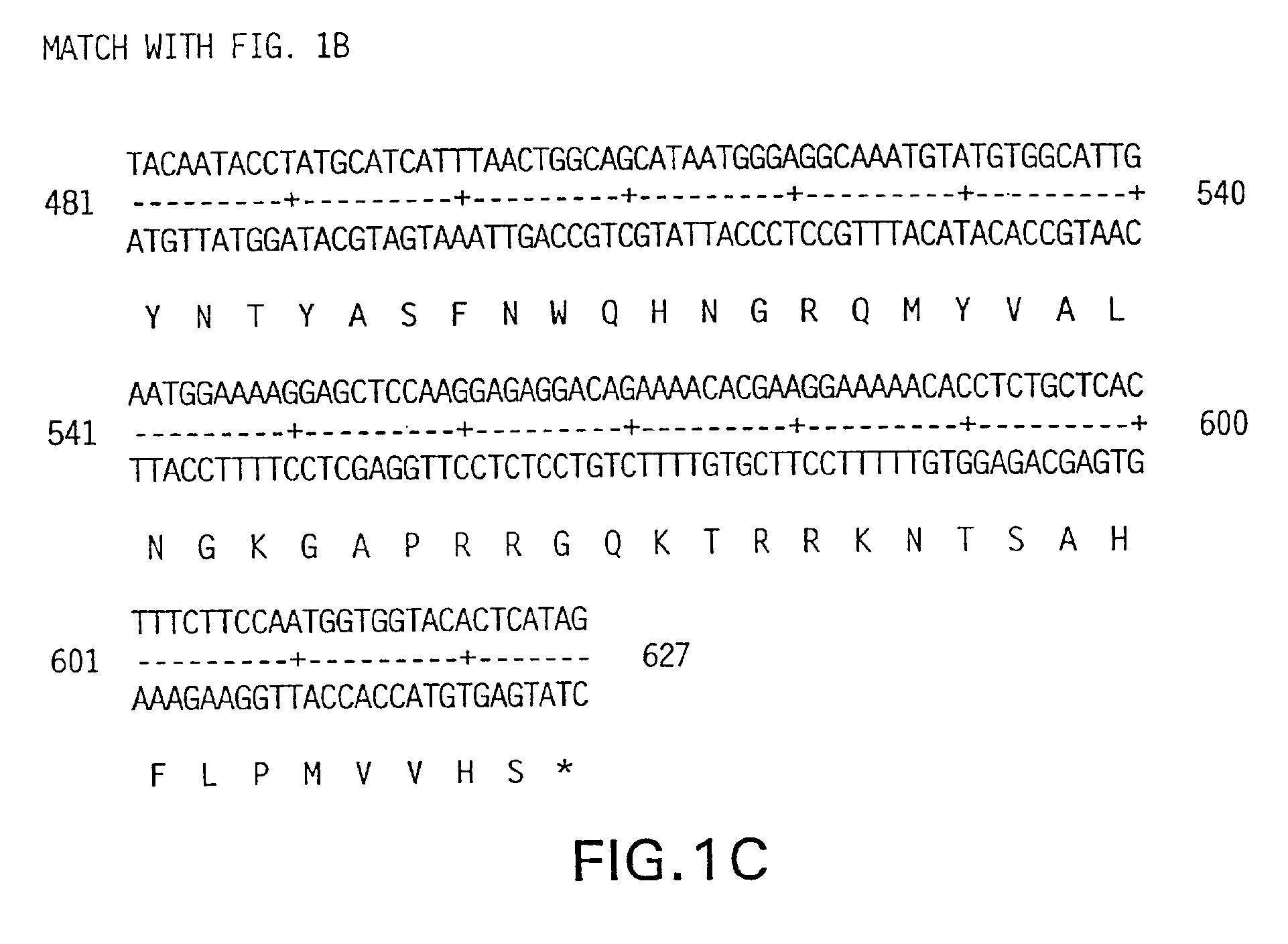Keratinocyte growth factor-2
a growth factor and keratinocyte technology, applied in the field of newly identified polynucleotides, can solve the problems of dehiscence, anastomotic breakdown, non-healing wounds, etc., and achieve the effects of promoting epithelial cell proliferation, reducing side effects of gut toxicity, and promoting proliferation
- Summary
- Abstract
- Description
- Claims
- Application Information
AI Technical Summary
Benefits of technology
Problems solved by technology
Method used
Image
Examples
example 1
Bacterial Expression and Purification of KGF-2
[0339]The DNA sequence encoding KGF-2, ATCC # 75977, is initially amplified using PCR oligonucleotide primers corresponding to the 5′ and 3′ end sequences of the processed KGF-2 cDNA (including the signal peptide sequence). The 5′ oligonucleotide primer has the sequence 5′ CCCCACATGTGGAAATGGATACTGACACATTGTGCC 3′ (SEQ ID No. 3) contains an Afl III restriction enzyme site including and followed by 30 nucleotides of KGF-2 coding sequence starting from the presumed initiation codon. The 3′ sequence 5′ CCCAAGCTTCCACAAACGTTGCCTTCCTCTATGAG 3′ (SEQ ID No. 4) contains complementary sequences to Hind III site and is followed by 26 nucleotides of KGF-2. The restriction enzyme sites are compatible with the restriction enzyme sites on the bacterial expression vector pQE-60 (Qiagen, Inc. Chatsworth, Calif.). pQE-60 encodes antibiotic resistance (Ampr), a bacterial origin of replication (ori), an IPTG-regulatable promoter operator (P / 0), a ribosome bin...
example 2
Bacterial Expression and Purification of a Truncated Version of KGF-2
[0340]The DNA sequence encoding KGF-2, ATCC # 75977, is initially amplified using PCR oligonucleotide primers corresponding to the 5′ and 3′ sequences of the truncated version of the KGF-2 polypeptide. The truncated version comprises the polypeptide minus the 36 amino acid signal sequence, with a methionine and alanine residue being added just before the cysteine residue which comprises amino acid 37 of the full-length protein. The 5′ oligonucleotide primer has the sequence 5′ CATGCCATGGCGTGCCAAGCCCTTGGTCAGGACATG 3′ (SEQ ID No. 5) contains an NcoI restriction enzyme site including and followed by 24 nucleotides of KGF-2 coding sequence. The 3′ sequence 5′ CCCAAGCTTCCACAAACGTTGCCTTCCTC TATGAG 3′ (SEQ ID No. 6) contains complementary sequences to Hind III site and is followed by 26 nucleotides of the KGF-2 gene. The restriction enzyme sites are compatible with the restriction enzyme sites on the bacterial expression ...
example 3
Cloning and Expression of KGF-2 Using the Baculovirus Expression System
[0341]The DNA sequence encoding the full length KGF-2 protein, ATCC # 75977, is amplified using PCR oligonucleotide primers corresponding to the 5′ and 3′ sequences of the gene:
[0342]The 5′ primer has the sequence 5′ GCGGGATCCGCCATCATGTGGAAATGGATACTCAC 3′ (SEQ ID No. 7) and contains a BamHI restriction enzyme site (in bold) followed by 6 nucleotides resembling an efficient signal for the initiation of translation in eukaryotic cells (Kozak, M., J. Mol. Biol., 196:947-950 (1987)) and just behind the first 17 nucleotides of the KGF-2 gene (the initiation codon for translation “ATG” is underlined).
[0343]The 3′ primer has the sequence 5′ GCGCGGTACCACAAACGTTGCCTTCCT 3′ (SEQ ID No. 8) and contains the cleavage site for the restriction endonuclease Asp718 and 19 nucleotides complementary to the 3′ non-translated sequence of the KGF-2 gene. The amplified sequences are isolated from a 1% agarose gel using a commercially a...
PUM
| Property | Measurement | Unit |
|---|---|---|
| thickness | aaaaa | aaaaa |
| pH | aaaaa | aaaaa |
| concentration | aaaaa | aaaaa |
Abstract
Description
Claims
Application Information
 Login to View More
Login to View More - R&D
- Intellectual Property
- Life Sciences
- Materials
- Tech Scout
- Unparalleled Data Quality
- Higher Quality Content
- 60% Fewer Hallucinations
Browse by: Latest US Patents, China's latest patents, Technical Efficacy Thesaurus, Application Domain, Technology Topic, Popular Technical Reports.
© 2025 PatSnap. All rights reserved.Legal|Privacy policy|Modern Slavery Act Transparency Statement|Sitemap|About US| Contact US: help@patsnap.com



